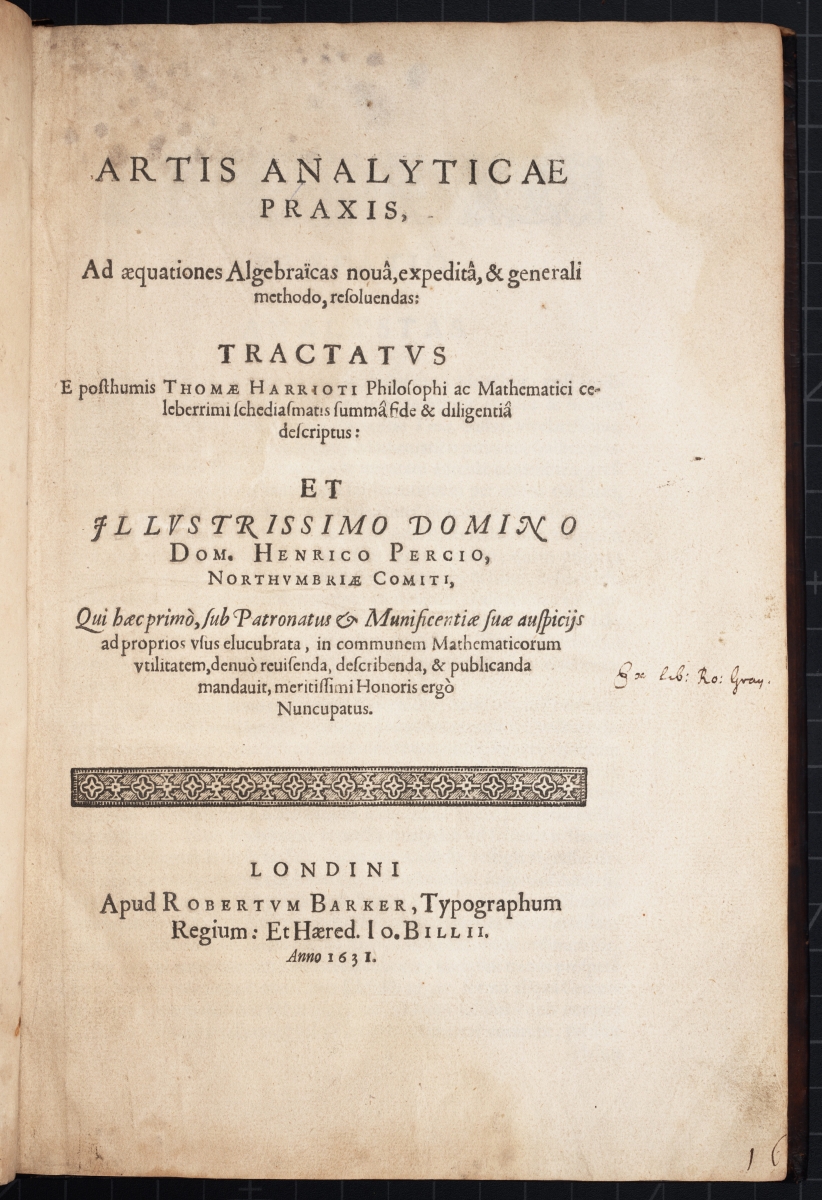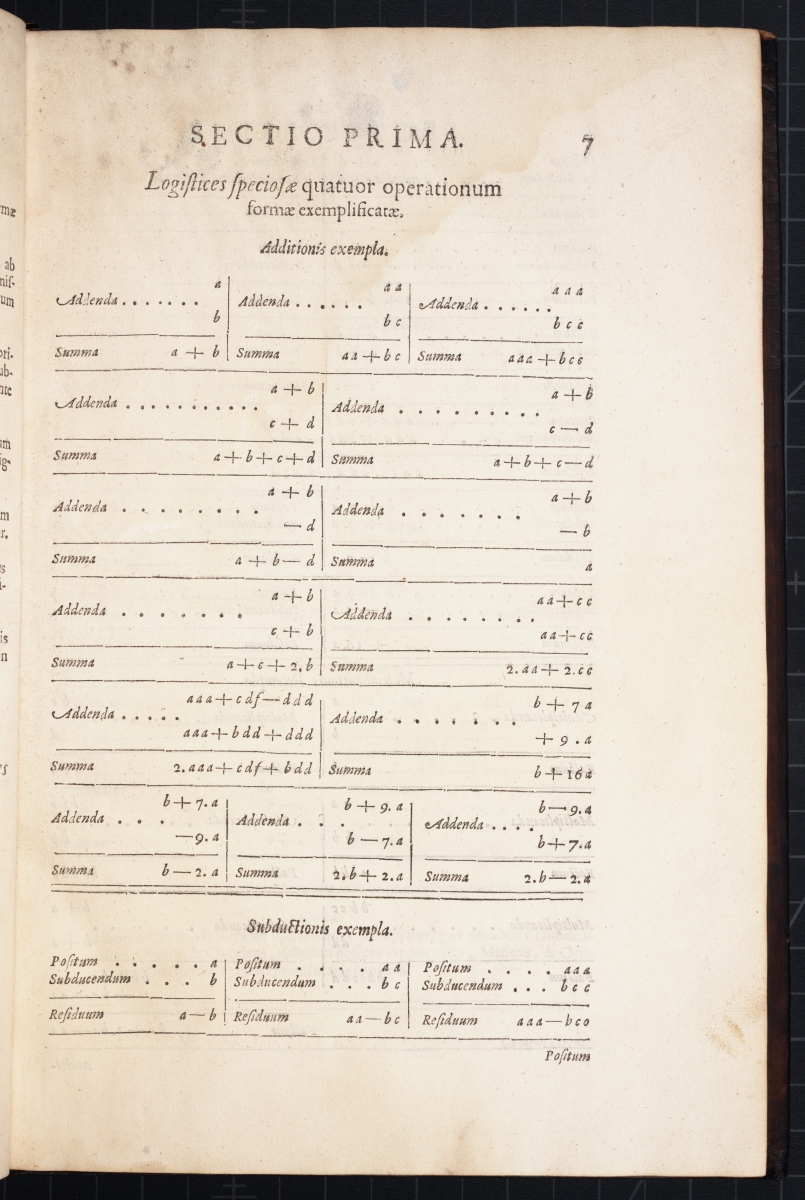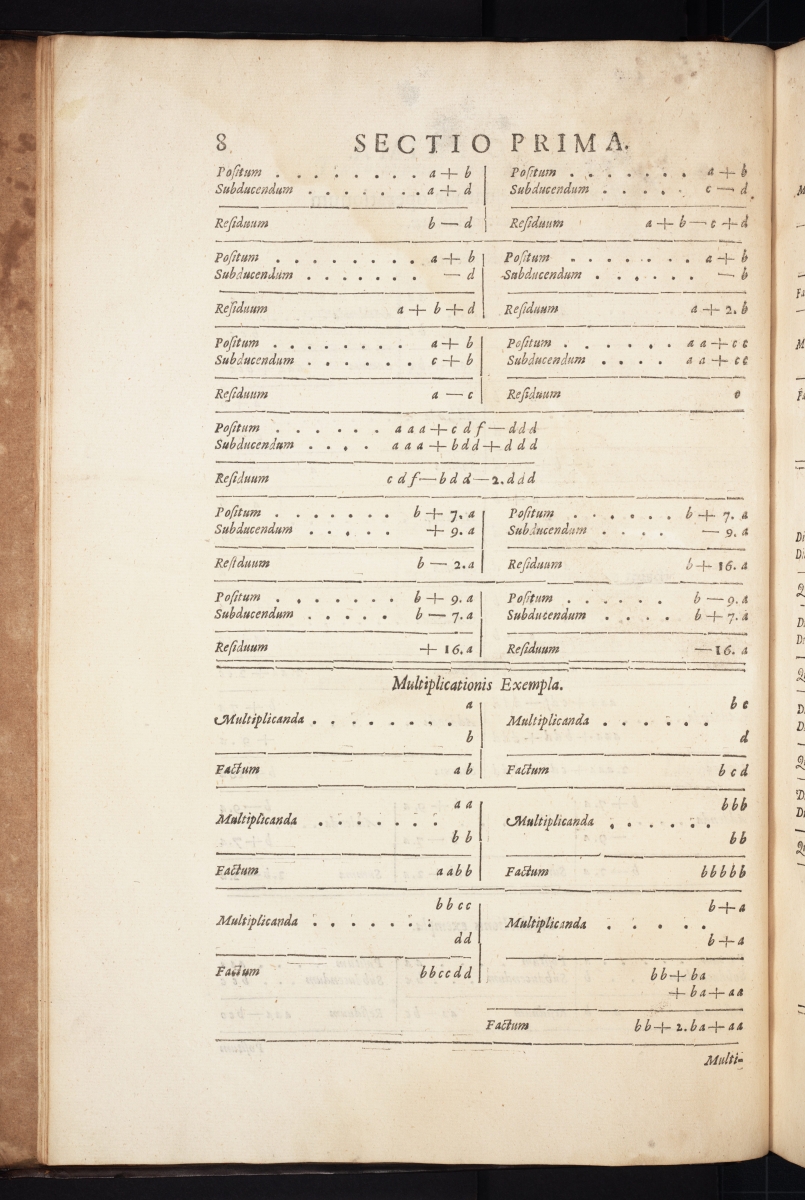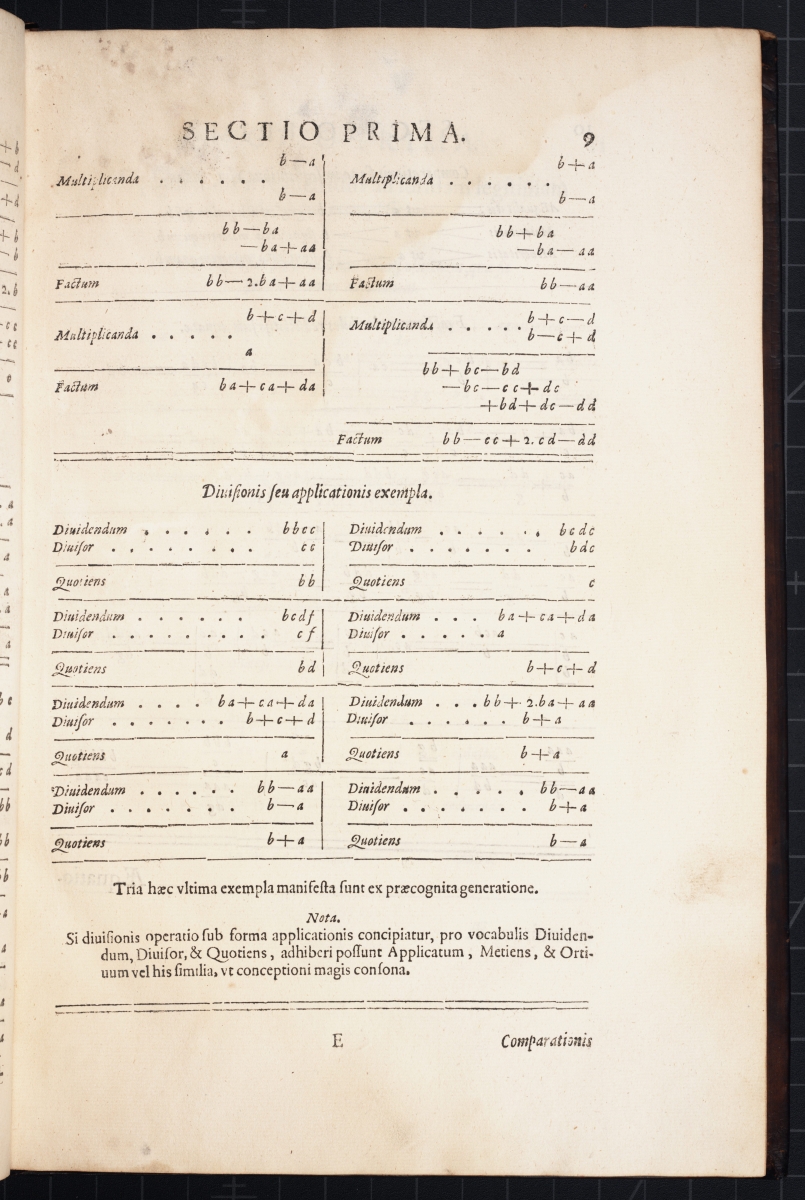- About MAA
- Membership
- MAA Publications
- Periodicals
- Blogs
- MAA Book Series
- MAA Press (an imprint of the AMS)
- MAA Notes
- MAA Reviews
- Mathematical Communication
- Information for Libraries
- Author Resources
- Advertise with MAA
- Meetings
- Competitions
- Programs
- Communities
- MAA Sections
- SIGMAA
- MAA Connect
- Students
- MAA Awards
- Awards Booklets
- Writing Awards
- Teaching Awards
- Service Awards
- Research Awards
- Lecture Awards
- Putnam Competition Individual and Team Winners
- D. E. Shaw Group AMC 8 Awards & Certificates
- Maryam Mirzakhani AMC 10 A Awards & Certificates
- Two Sigma AMC 10 B Awards & Certificates
- Jane Street AMC 12 A Awards & Certificates
- Akamai AMC 12 B Awards & Certificates
- High School Teachers
- News
You are here
Mathematical Treasure: Harriot’s Artis Analyticae Praxis
Written by Thomas Harriot, Artis Analyticae Praxis (Practice of the Art of Analysis) was published in 1631, ten years after Harriot’s death. According to Katz and Parshall, “a convert to Viète’s ideas, the Englishman [Harriot] extended them by making algebraic arguments even more symbolic. ... Harriot’s notational innovations made Viète’s ideas an even more useful tool for manipulating and solving equations. [Then] Fermat … fashioned these ideas into a tool for dealing algebraically with curves in the plane.” (Katz & Parshall, pp. 249, 252) Below is the title page of Artis Analyticae Praxis.

Next are images of three pages with examples of arithmetic operations using variables.



The image below shows the derivation of the quadratic equation \( a^2 – ba + ca = bc \) from expanding \( (a – b)(a + c) = 0 \).

The image below shows reducing the trinomial \( a^3 – 3ba^2 + 3b^2a = b^3 + c^3 \) to the binomial \( a^3 – 3bca = b^3 + c^3 \).

Images from another copy of the 1631 edition of Artis Analyticae Praxis can also be found in Convergence.
English translations of Harriot’s Artis Analyticae Praxis are available on the web and in print.
A complete digital scan of Artis Analyticae Praxis is available in the Linda Hall Library Digital Collections. The call number is QA33.H37 1631.
Images in this article are courtesy of the Linda Hall Library of Science, Engineering & Technology and used with permission. The Linda Hall Library makes available all existing digital images from its collection that are in the public domain to be used for any purpose under the terms of a Creative Commons License CC by 4.0. The Library’s preferred credit line for all use is: “Courtesy of The Linda Hall Library of Science, Engineering & Technology.”
Reference
Katz, Victor J., and Karen Hunger Parshall. Taming the Unknown: A History of Algebra from Antiquity to the Early Twentieth Century. Princeton: Princeton University Press, 2014.
Cynthia J. Huffman (Pittsburg State University), "Mathematical Treasure: Harriot’s Artis Analyticae Praxis," Convergence (June 2018)




